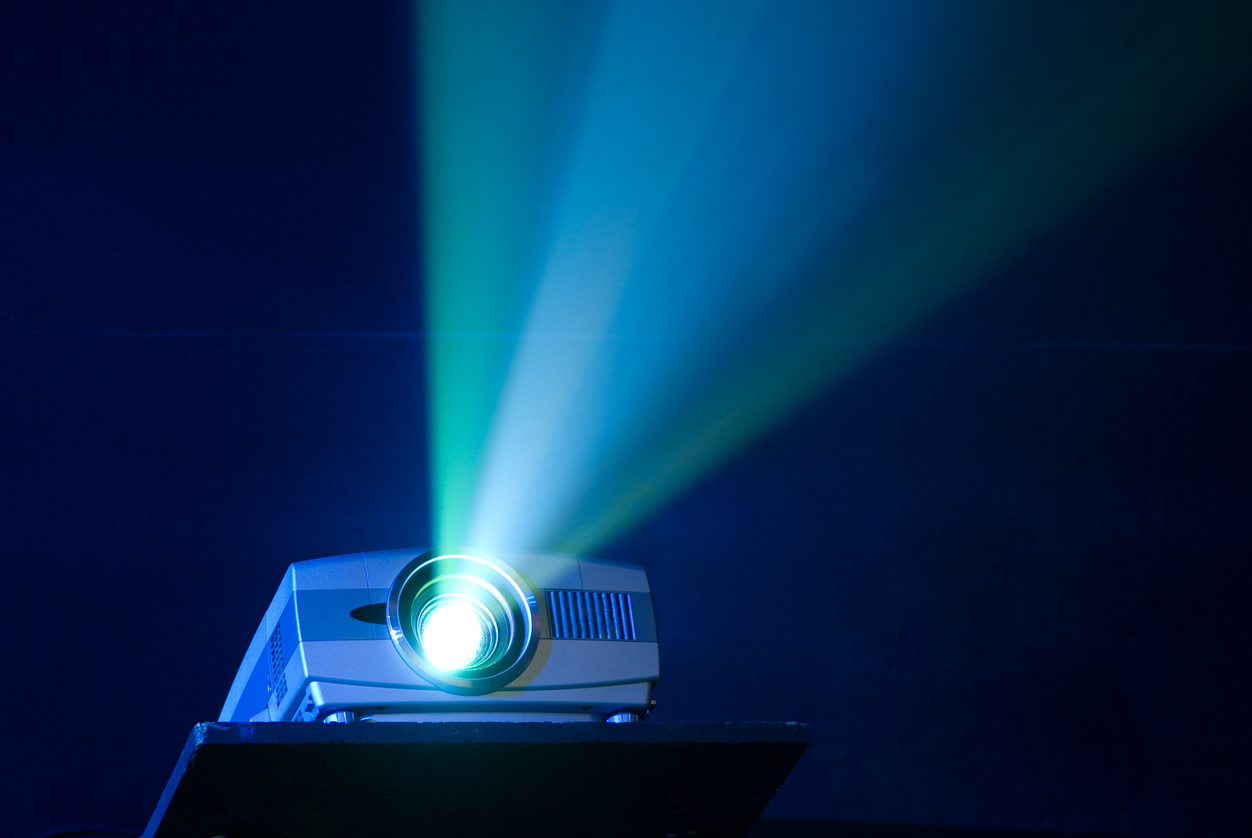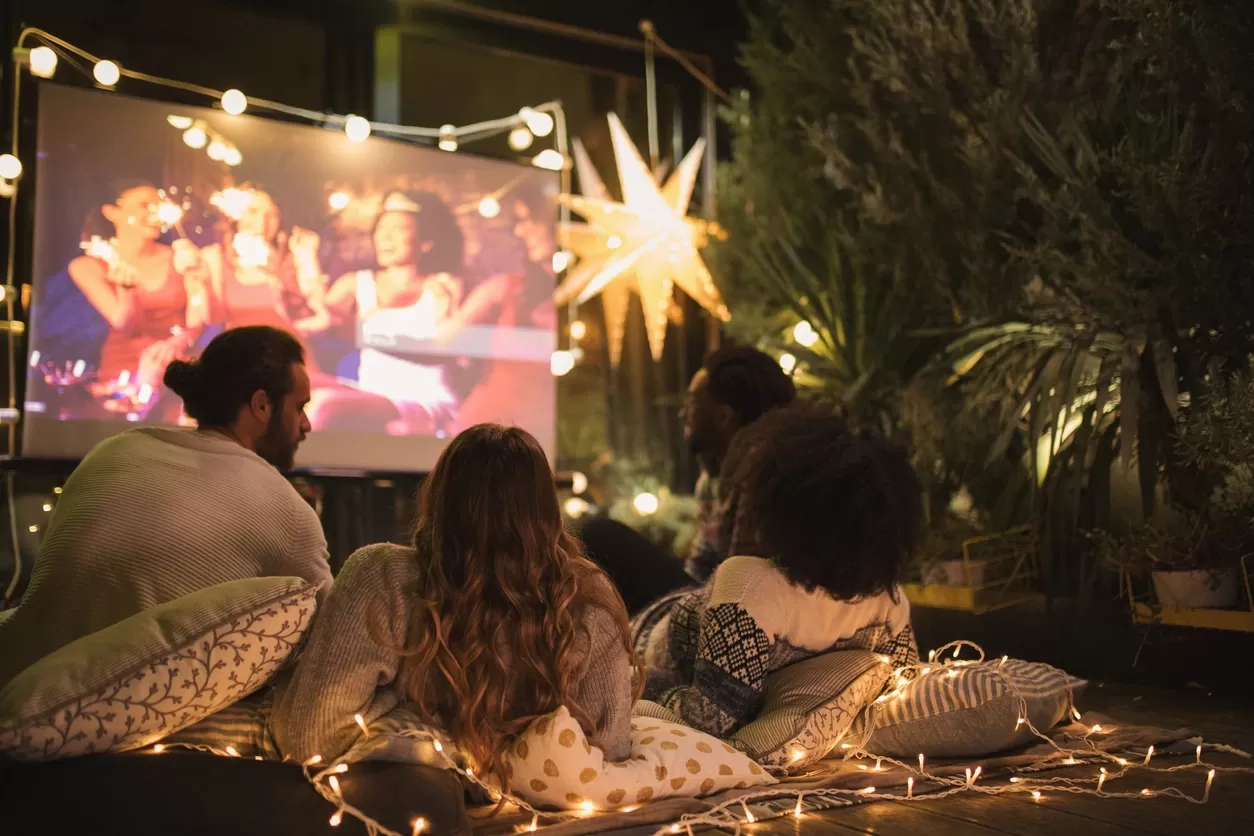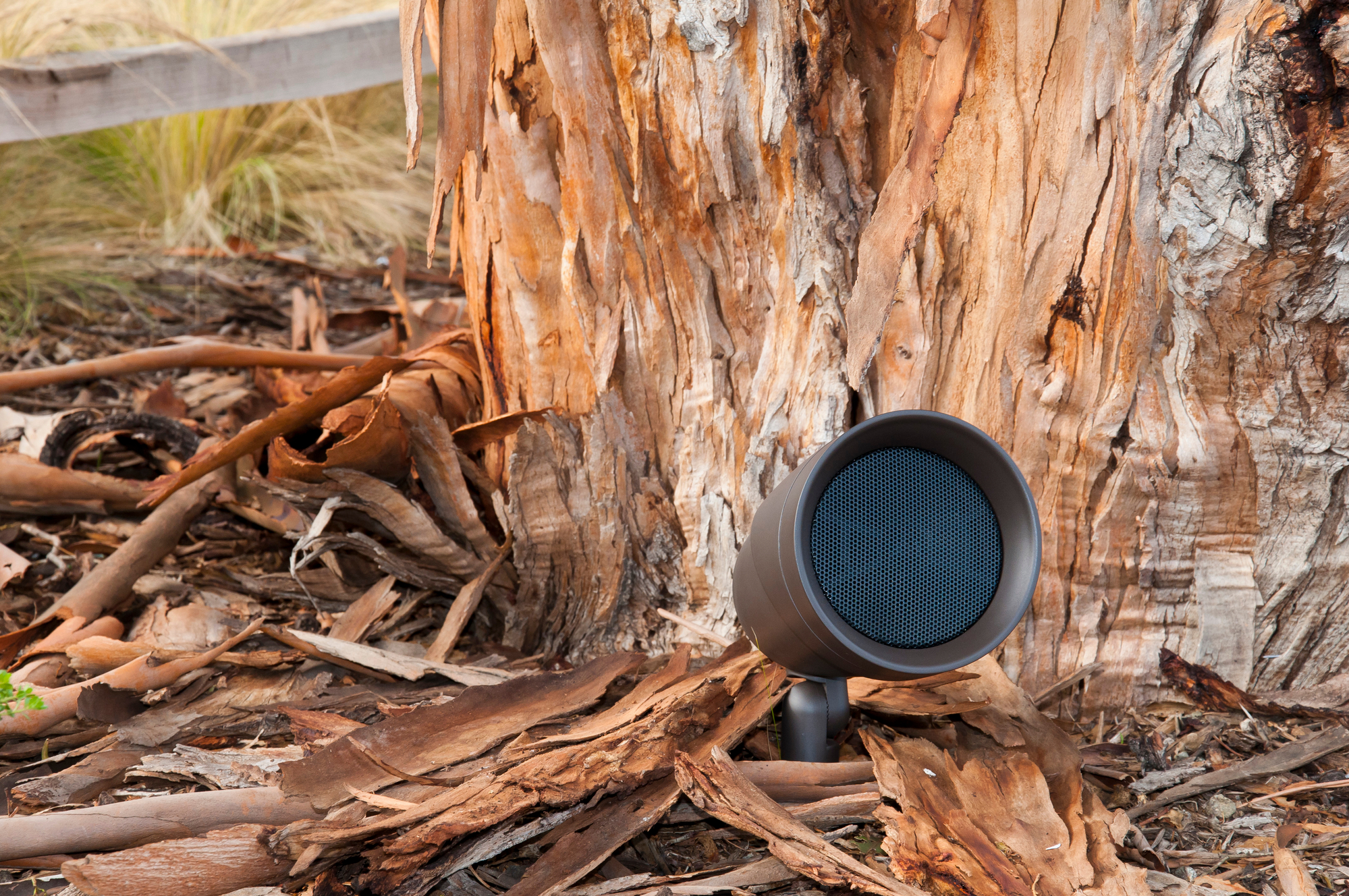Choosing the Best Projector and Screen for Your Outdoor Space
Aspect Ratio
A projector’s aspect ratio is the ratio between the width and the height. A 4:3 ratio is a squarer image, whereas 16:9 is standard for most films and other modern content and is generally the preferred option. It’s also the ratio that almost, if not all, TVs are made with. Knowing the aspect ratio of your projector lets you find a screen that will suit the projection.
Lumens
The term “lumens” refers to the brightness of your projector. In a dark room with no windows, 1,000 lumens can be sufficient, but outdoor spaces are different. Typically, outdoor spaces require a projector with at least 3,000 lumens for good screen visibility; and if you plan to watch content outdoors during the day, you may need to go higher, up to 6,000 lumens or more is recommended.
Bulb Lifetime

Many projector light bulbs advertise a lifespan anywhere between 30,000 and 70,000 hours, but in reality, your viewing time will likely never reach that amount. So don’t stress about the lifetime of whichever bulb you choose; chances are it will be more than enough. Even if you do end up having to replace your bulb, they are relatively inexpensive, and you’ll likely be ready to upgrade to something newer by this point.
WiFi Capability
WiFi capability in projectors is the latest advancement in the projector world. WiFi ensures you don’t need a wired internet connection and opens up the world of streaming services such as Netflix and Hulu through your projector. You’ll want to be sure your outdoor space has a strong internet signal to avoid lagging and buffering issues. Also, WiFi projectors tend to be more expensive than traditional ones but are worth it if you want to stream your content without purchasing additional devices. This is more often found on multi-purpose projectors whereas higher-end projectors focused on picture quality might not have this.
Speakers
Most multi-purpose projectors have built-in speakers but tend to be a little underpowered for the purposes of an outdoor space. Adding external speakers or a soundbar will definitely improve sound levels and quality. You have a choice of wired or wireless speakers, whichever is better for your application. Installing weatherproof speakers is a great way to enjoy music at any time, not just sound for when you watch movies.
Type of Screen

There are many different types of screens that pair with an outdoor projector, such as hanging, retractable, standing, and even inflatable screens. The stability of the screen is imperative for a successful viewing experience, as you don’t want it moving around or falling when you’re trying to watch it! This also comes down to the design of your environment. A motorized screen at the end of your infinity-edge pool will blend in better than a big inflatable screen in the middle of your yard.
Screen Placement
When choosing a screen, consider where you’ll be placing it in relation to both your projector and the surrounding outdoor space. You’ll want a long throw distance — the distance from the projector to the screen — at least six feet is recommended. A covered or shaded area is recommended for your screen, making it easier to see, especially during the daytime or at night if you’re competing with ambient lighting from cars, streetlights, or other interferences.
Call or Visit Us
If you’re looking for help choosing an outdoor projector, screen, or sound system for your next movie night or game day, AV Design Consultants has you covered to create the perfect outdoor entertainment space. Contact us at AV Design Consultants to learn more about our products and services.
When you subscribe to the blog, we will send you an e-mail when there are new updates on the site so you wouldn't miss them.






